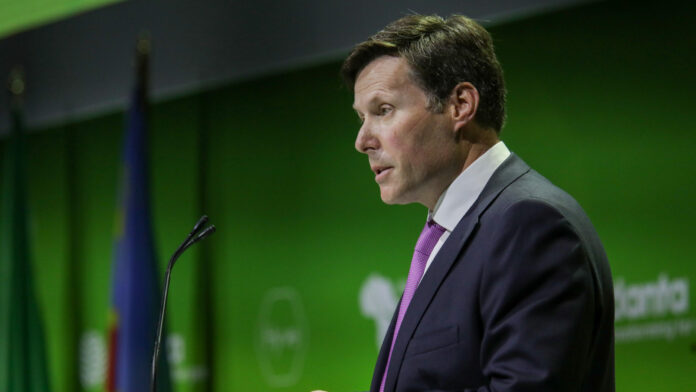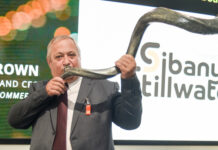
ANGLO American reported a 55 US cent per share interim loss on Thursday after writing down its investment in the Woodsmith fertiliser minerals project for $1.6bn.
Basic underlying earnings came in at $1.06/share, 23% lower year-on-year amid a 10% decline in the basket price for metals Anglo mines, especially PGMs and iron ore.
The write-down was a result of Anglo opting to delay Woodsmith amid a restructuring of the group unveiled in May weeks after BHP announced a £38bn all-share takeover approach. Anglo previously impaired Woodsmith for $1.7bn.
A $500m interim dividend was declared by the group, equal to 42 US cents per share in line with the group’s 40% payout policy.
Anglo also said it was “on track” to reduce annual costs by $1.7bn and reduce capex by $1.6bn between 2024 and 2026, but the focus fell heavily on CEO Duncan Wanblad’s plan to “daylight” the firm’s copper and iron ore production by selling assets.
In terms of the restructuring, Anglo intends to sell its platinum and diamond assets by the end of 2025. A third asset, its metallurgical coal mines in Australia, is also up for sale and appears most likely to be completed first.
Wanblad said in a media call today that the coal assets would be sold through a “classic two-stage auction”, adding there were a number of bidders. “The hope is that the end of this year or early next year we will have a deal,” he said.
However, a fire at one of the mines – Grosvenor – on June 29 had potential to seriously disrupt Anglo’s sale plans. Asked if the damage sustained by Grosvenor could affect the sale value, Wanblad replied: “The price will be function of a sense of damage by the fire”.
There was no write-down on Grosvenor following the fire, which is carried on Anglo’s books at $1.3bn. John Heasley, Anglo CFO said at the group’s presentation to analysts that the mine’s carrying value would “be monitored” until the extent of the fire was known.
There was no intention at this stage to sell Grosvenor separately and Wanblad didn’t think the fire-affected longwall section at Grosevenor would be operated again by his company.
A similarly tricky asset to dispose was De Beers, which could either by through a trade sale or a demerger and possible listing, owing to the deterioration in the diamond market. Based on fifth cycle sales by De Beers, which is 85% owned by Anglo American, diamond prices are only likely to improve next year.
The diamond index fell 20% in the six months which has seen De Beers announce today a three million carat reduction in annual production, its second cut of the year.
“It will be some time before we definitively decide on a demerger or a trade sale as the preparation that goes into either is similar,” said Wanblad. “We think the sale will more likely be in the course of next year at this point in time,” he added.
There was no plan to halt the divestment of De Beers until the market had improved. “Buyers interested in diamonds understand how these sales work and on this basis, I’m not stopping anything. We will keep going until we know what the buyer set looks like.
“Given what we are seeing in interest we are still pretty determined to get it done next year.” He earlier said that the restructuring of Anglo would “be done” by 2025.
Anglo’s 40% stake in Samancor, a South African manganese producer, was not a priority, said Wanblad. The asset, shared with South32, produced record manganese ore in South32’s 2024 financial year.
Wanblad said Anglo expected to produce its first minerals fertiliser from Woodsmith in 2030, three years later than planned. The delay in commissioning was to allow Anglo to get “our finances are in great shape”, said Wanblad.
The project, which is expected to cost $4.8bn, was a major drag on Anglo’s balance sheet last year and was subsequently slowed. “The plan is to progress studies through to next year,” said Wanblad.
Once the studies were complete the company would “solicit an interested syndication partner. He added: “We will not land partners until we are very clear that we will progress the project ourselves which will be in a couple of years’ time rather than next year”.











